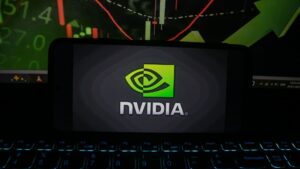Understanding Nvidia’s Recent Downgrade: Insights from the Extreme Investor Network
Nvidia has become synonymous with cutting-edge technology and artificial intelligence (AI) innovations. As the tech giant continues to ride the AI boom with its powerful data center GPUs, it’s essential for investors to stay informed about fluctuations in analyst ratings and market conditions. Recently, Nvidia reported impressive earnings and guidance, yet saw one analyst downgrade the stock. What does this mean for investors? Here at the Extreme Investor Network, we break down the situation with unique insights that can help you make informed decisions about your investments.
Breaking Down the Downgrade
On the surface, Nvidia’s latest earnings report showcased a staggering 78% increase in revenue for the quarter ending in January, and a full fiscal-year revenue hike of 114%, reaching an astonishing $130.5 billion. Such explosive growth has made Nvidia a darling among investors seeking exposure to the AI sector, where demand for powerful GPUs shows no signs of slowing down.
However, the landscape is changing. Summit Insights Group’s analyst KinNgai Chan recently downgraded Nvidia from a “buy” to a “hold” rating. His rationale? A potential shift in the market need for computing power due to the emergence of new players like the Chinese AI startup DeepSeek.
The Rise of DeepSeek
DeepSeek distinguishes itself by requiring significantly less computing power than other large language models. In fact, their V3 model demands less than $6 million worth of computing power from Nvidia H800 chips. This is a stark contrast to the substantial resources typically required for training large language models, and it raises a critical question: Will this trend diminish Nvidia’s dominance in the GPU market?
Chan expresses concerns about the risk-reward profile of Nvidia shares, particularly as language models evolve and the need for computational horsepower potentially declines. He emphasized that while the data center capex growth in this training market currently supports Nvidia’s financial performance, any long-term reductions in computing requirements could impact the company negatively.
What This Means for Investors
So, what should investors take away from this nuanced situation? Here are several key points to consider:
-
Evolution of AI Models: As AI technology matures, the requirements for hardware will likely shift. Keeping an eye on companies like DeepSeek could prove valuable. Innovations from smaller players can either disrupt the market or catalyze new demand for Nvidia’s products.
-
Diversification: While Nvidia continues to be a significant player in the AI space, don’t put all your eggs in one basket. Diversifying your investment portfolio can mitigate risks, especially with potential competitors emerging on the horizon.
-
Long-Term Vision: Evaluate your investment strategy in terms of long-term performance. Nvidia has positioned itself well for growth opportunities in AI, but it’s essential to remain vigilant and adjust your strategies in response to evolving market dynamics.
- Continuous Research: Use resources like the Extreme Investor Network to stay updated on market trends, emerging technologies, and financial analysis. Knowledge is power in the ever-changing world of investments.
In conclusion, Nvidia’s recent growth is impressive, but the landscape of AI and computing power is evolving rapidly—with growing competition signaling a potential change. By understanding these dynamics and considering additional perspectives, you can navigate the investment waters with greater awareness and confidence. Stay tuned with the Extreme Investor Network for more deep dives into the world of investing, ensuring that you are equipped with the insights needed to stay ahead in an evolving market.
Let us amplify your investment journey with knowledge—and empower you to make informed choices in uncertain times!

